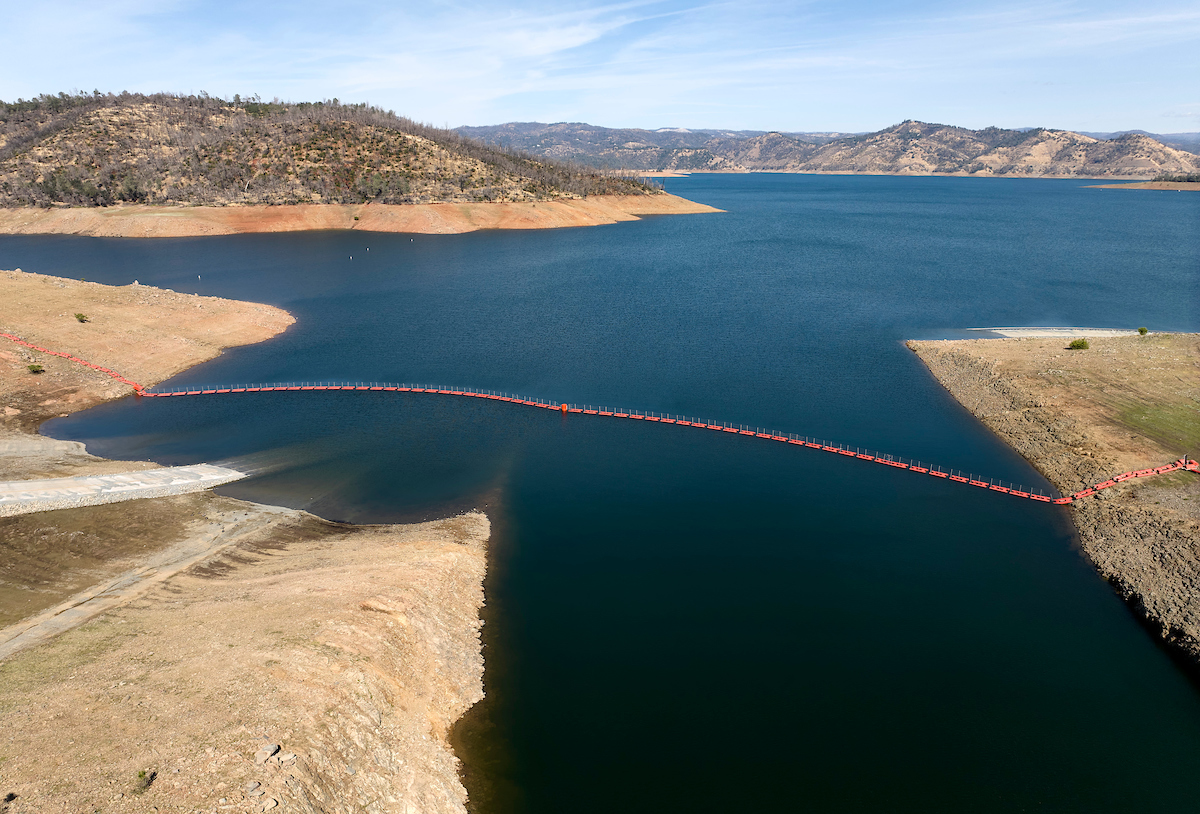A drone view of water levels at the Oroville Dam located at Lake Oroville in Butte County, California. Photo taken October 2, 2023.
Today, the Department of Water Resources (DWR) announced an initial State Water Project (SWP) allocation forecast of 10 percent of requested supplies for 2024. The SWP provides water to 29 public water agencies that serve 27 million Californians.
The December 1 initial water supply forecast is the first allocation of the new water year and is based on current reservoir storage and an assumption of very dry conditions. So far in October and November, storms have not brought as much rain and snow.
“California’s water year is off to a relatively dry start. While we are hopeful that this El Niño pattern will generate wet weather, this early in the season we have to plan with drier conditions in mind,” said DWR Director Karla Nemeth. “California’s water supply continues to benefit from our aggressive efforts last season to capture record rain and snow melt in our reservoirs and groundwater basins.”
The initial SWP allocation forecast is looking ahead to 2024 and only applies to water deliveries in the year ahead. The allocation is calculated based on October and November precipitation, dry soils, runoff, and storage in Lake Oroville. It has no bearing on current water supplies or water captured in 2023. Most reservoirs in the state remain above average for this time of year.
Highlights of California’s Water Supply Storage
- Last winter, a total of 3.5 million acre-feet of water was captured in SWP reservoirs. The SWP delivered 2.7 million acre-feet in allocated water plus an additional 400,000 acre-feet of supplemental water to SWP contractors in 2023.
- To date, Lake Oroville, the SWP’s largest reservoir, is at 133 percent of average.
- San Luis Reservoir, jointly operated by the SWP and Central Valley Project, remains at 109 percent of average. Water stored in San Luis also includes water from 2023 being stored by water contractors for use in future dry years.
- In coordination with the Metropolitan Water District (MWD), DWR provided water to fill up Diamond Valley Reservoir for the first time in three years. The facility is a critical part of the Southern California water delivery system.
- California was also able to redirect excess storm water for groundwater recharge. DWR has estimated more than 3.8 million acre-feet of recharge capacity in 2023, including more than 1.2 million acre-feet of groundwater recharge permitted by State agencies, 390,817 acre-feet of flood water recharged using the Governor’s Executive Orders, and millions more acre-feet of managed and naturally occurring recharge.
It is not uncommon for the initial allocation forecast to be low following very wet years. For Water Year 2018, the initial allocation was 15 percent following an 85 percent final allocation in 2017. Water Year 2020 started with a 10 percent initial allocation following a 75 percent final allocation in 2019. Both 2017 and 2019 were very wet winters. More historical data on SWP allocations is available at https://water.ca.gov/programs/state-water-project/management/swp-water-contractors.
As the winter progresses, if California sees an increase in rain and snowfall, the allocation forecast may increase.
Each year, DWR provides the initial SWP allocation by December 1 based on available water storage, projected water supply, and water demands. Allocations are updated monthly as snowpack, rainfall, and runoff information is assessed, with a final allocation typically determined in May or June.
Contact:
Ryan Endean, Public Affairs, Department of Water Resources
media@water.ca.gov
